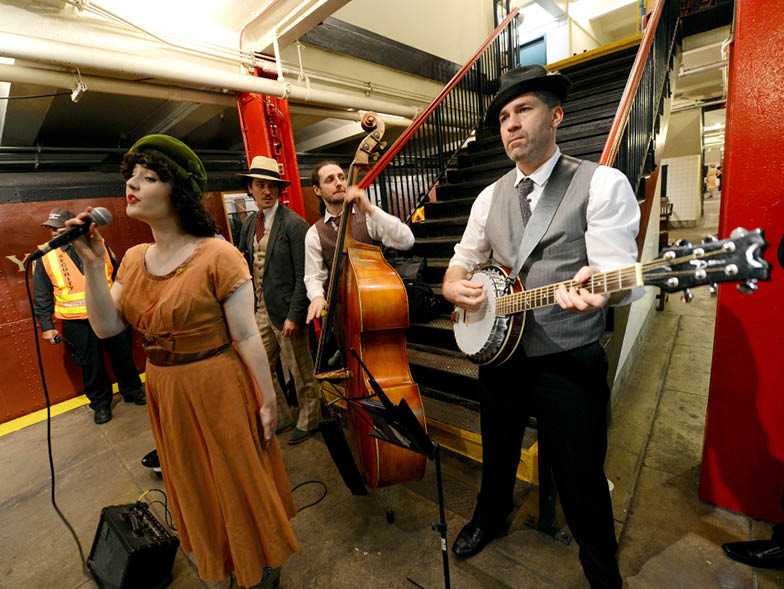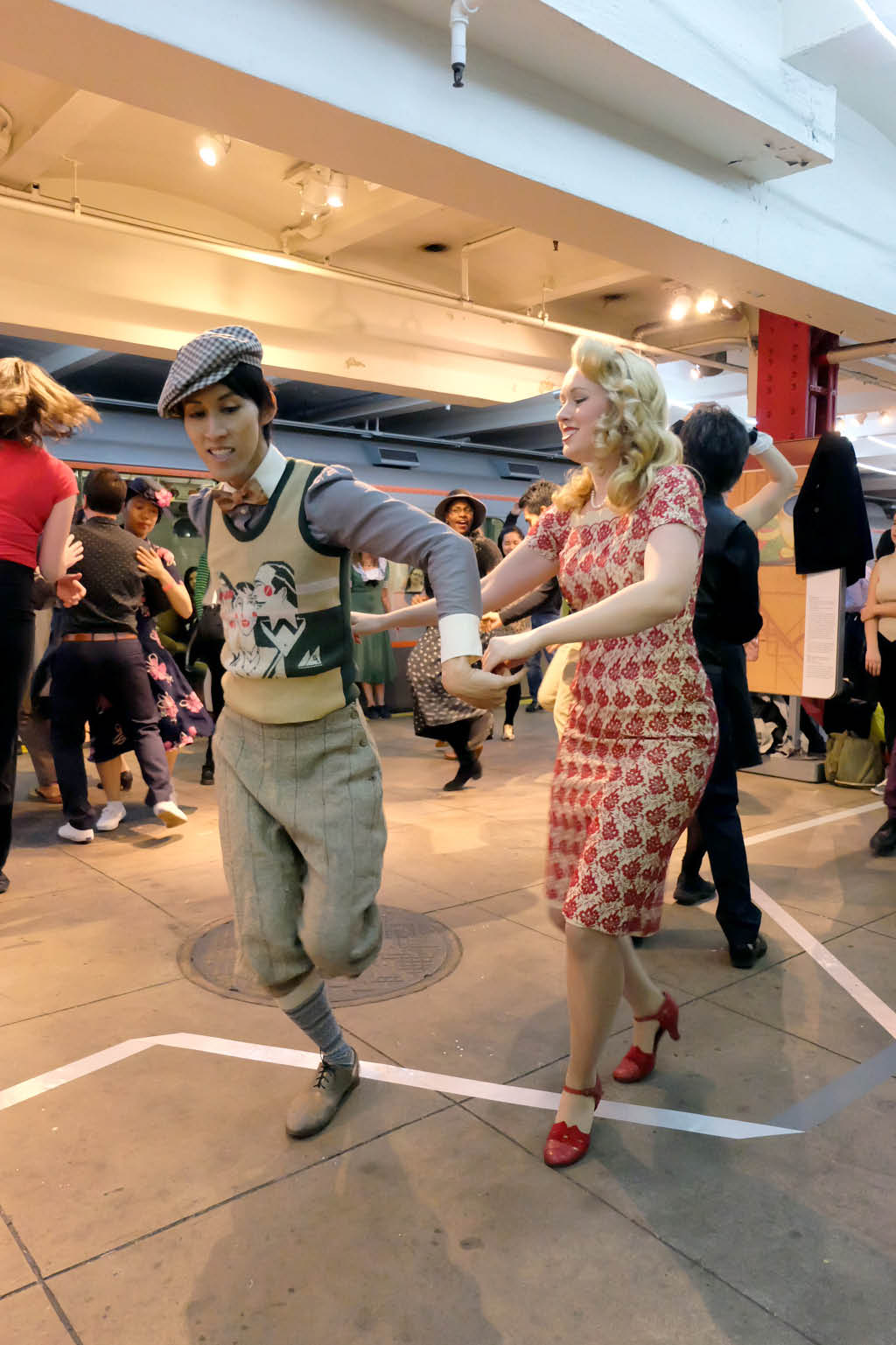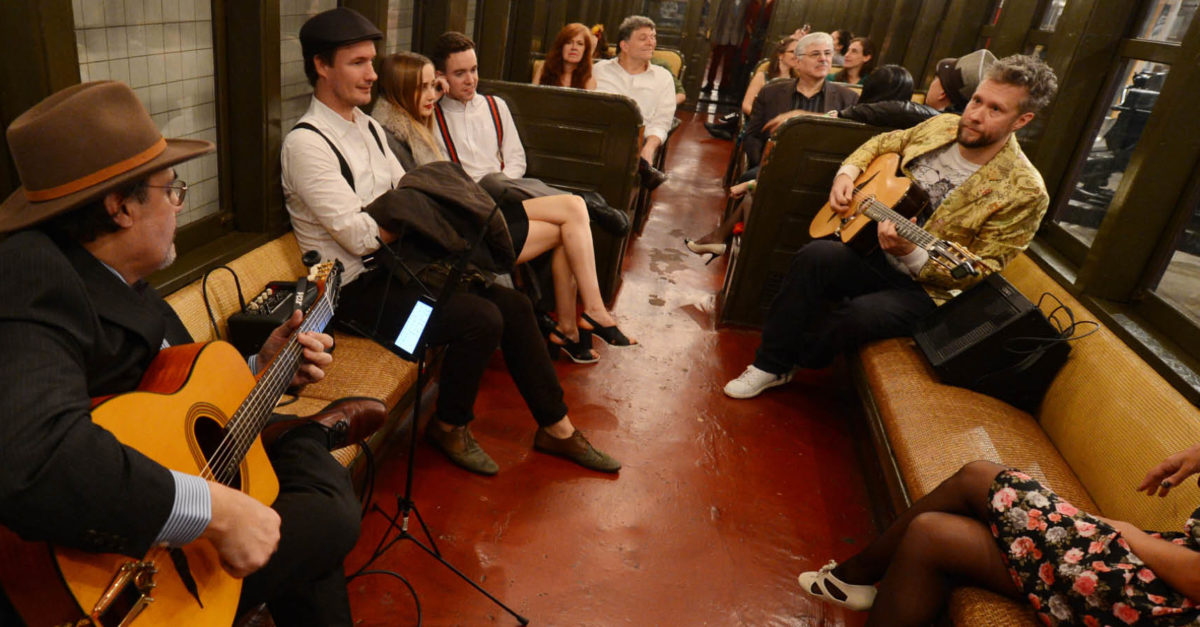Choo Choo Ch’Boogie
Ice-skating beneath the tree at Rockefeller Center. Catching the Rockettes’ Christmas Spectacular. Self-guided store window tours of Tiffany’s and Saks Fifth Avenue. These are holiday traditions that have lasted through generations of New York City natives and tourists alike.
A perhaps lesser-known tradition takes place underneath the city from Thanksgiving to Christmas Eve. This is when the Metropolitan Transit Authority starts putting the New York Transit Museum’s restored vintage R-1 through R-9 train cars back into operation. Dubbed the Holiday Nostalgia Train, this throwback event began in 2004 to coincide with the subway’s centennial.

The trains are in regular service, only requiring one swipe of a MetroCard or $2.75. The route and schedule are announced each fall, and they may change slightly from year to year. As Regina Asborno, deputy director at the New York Transit Museum, explains, “It’s a bit of a puzzle depending on what construction is going on. Not all trains fit on all the tracks, so we work with transit and go with
their recommendations.” Part of the preservation of these cars involves keeping them moving, letting the oil seep into all the right places, and passing electricity through the circuits. Subway trains are machines, after all, and perform best when they are running. If left to sit, the cars eventually decay and become inoperable. The creation of the Nostalgia Train is a win-win situation for the vintage trains and the people who love to ride them.
This vintage series of sixty-foot-long subway cars was designed in 1932 and named for the contract it was ordered under, Revenue Contract 1. Each car contained sixty seats in a combination of crosswise and lengthwise seating and had room for 280 passengers. The R-1’s trademark green, riveted shell is characteristic of the industrial look of the Depression. The R-1 cars also have four sets of double doors on each side, and safety devices were installed so doors could not be held open by passengers.
The New York Transit Museum facilitates other Nostalgia Train rides throughout the year on the vintage subway cars, picking up passengers from somewhere in the system and taking them to designated places like Coney Island or to the Transit Museum itself. The museum was founded in 1976 as part of the country’s bicentennial celebration. It was a time of transition in the city, and transit employees saw an opportunity to remind New Yorkers of the wonder of the subway. They resurrected vintage trains and brought them into the Court Street Station, which had been decommissioned and served as an ideal venue for the museum. The exhibit was only meant to be temporary, and yet it still stands over forty years later.

Though these trains are still a surprise to many subway riders, their popularity has grown over the years. The vintage holiday rides are especially beloved
by the vintage clothing aficionados, jazz musicians and enthusiasts, and swing dancers. So beloved, in fact, that unofficial pop-up parties began happening as a collaboration between these groups whose interests coincided on a specific era. For ten years, New Yorker and swing dancer Amy Winn has organized this ad hoc festival of sorts. Dubbed the New York City Vintage Train Jazz and Swing Platform Festival, this one-day event in December (always on a Sunday afternoon) sees these subsets converge with the general public in joyful celebration.
The seven-hour shindig features twelve to fourteen bands playing fifty-minute sets on the train, a designated station platform, or both. Bands include ensembles that are already well known to swing dancers, those headed by frequent side players who want to present themselves as bandleaders, or emerging groups eager to get in front of new audiences. Because this is a free event, the public is encouraged to tip generously and the bands are given the nudge to advocate for themselves.
This kind of gathering is a big deal in dense New York City, where large collective spaces are few and far between.
Why does Winn willingly take on such a giant project? “I’m always happy to help with events that help musicians earn a living, but this one is a gift to all of those communities,” she says.

Winn is equal parts humble about and proud of this unofficial event. It’s a true labor of love, garnering her no reward other than the mirth that comes from watching the awed faces of those who do not expect a train car full of people decked out in vintage garb, elaborate hairstyles, and a six-piece New Orleans-style jazz band to suddenly appear in front of them.
The New York Transit Museum took notice of the success and joy of this musical day and created an official annual event called Subway Swing, which began in December of 2014. Shaelyn Amaio, public programs producer at the museum, explains, “We knew there were swing dancers and people in vintage clothing enjoying the vintage cars, but they didn’t necessarily know about the Transit Museum. We saw it as an opportunity to grow our audience by bringing people into the museum and continuing the celebration of the vintage trains there.”
The train picks up people at a designated subway station and heads to the museum, where the musicians play and the party happens. The museum releases about 300 tickets, though the number varies a bit each year. In 2017, Subway Swing sold out in under nine hours, which is the fastest tickets have ever sold out. Amaio says, “People come every single year and call me in October to ask when tickets are going on sale. We feel so lucky to have that community of people who want to share that experience and want to come back to the museum. It’s become a really lovely relationship and a really good way for us to bring the community to life.”
The Transit Museum is open six days a week, and it offers a great opportunity to tour some of the vintage trains with fewer crowds around. You can sit on the rattan seats, look up at the ceiling fans, read the retro advertisements, and pose for memorable Instagram pictures. There are guided tours of the museum on the weekend as well.
Whether it’s a ticket to Subway Swing, an official Nostalgia Ride, a visit to the New York Transit Museum, or simply hopping on a vintage train during the holiday season, anything associated with the restoration and running of the vintage subway cars is a wonderful opportunity to experience history firsthand—and maybe to dance a bit of swing on the side.
For more info, visit nytransitmuseum.org/nostalgiarides.






















